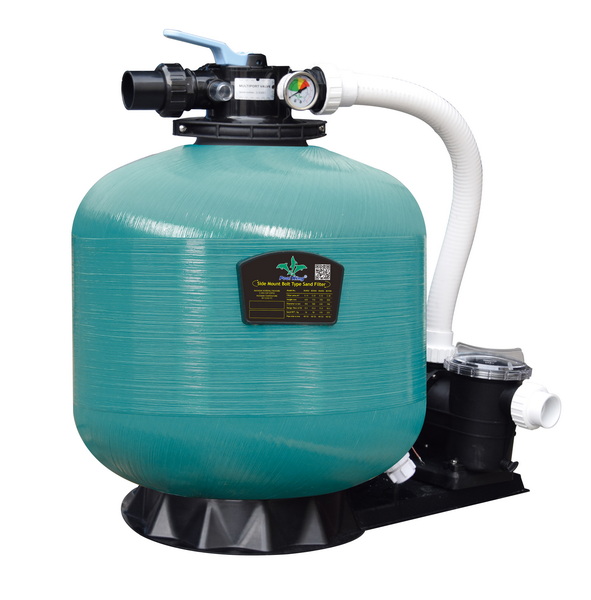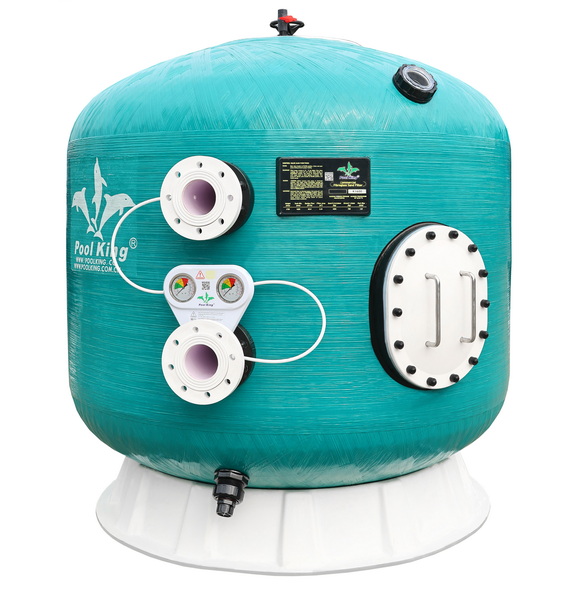Views: 222 Author: Tina Publish Time: 2025-10-20 Origin: Site








Content Menu
● What is a Hayward Pool Filter?
● Importance of Proper Sand Quantity in Filters
● How Much Sand Does Each Hayward Pool Filter Model Require?
● Step-by-Step Guide to Filling Your Hayward Sand Filter
● Maintenance Best Practices for Hayward Sand Filters
● Troubleshooting Common Issues
● Advantages of Using the Correct Sand Amount
● FAQs
>> 1. Can I use regular construction sand in my Hayward filter?
>> 2. How often should I replace the sand?
>> 3. What if I add too much sand?
>> 4. What's better: sand or alternative media?
>> 5. How do I dispose of used filter sand?
Maintaining a clean and clear pool is essential for the best swimming experience, and choosing the right amount of sand for your Hayward pool filter is crucial to achieve this. Hayward pool filters rely on precise quantities of silica sand to effectively trap dirt and debris, ensuring the water remains safe and sparkling. This comprehensive guide will walk you through how much sand your Hayward pool filter requires, why specific sand grades matter, installation tips, maintenance best practices, and troubleshooting. Whether you are a pool owner, wholesaler, or retailer, understanding these details will help ensure top performance from your filtration system.

Hayward is a leading manufacturer known for producing high-quality pool filtration systems, including sand filters that use silica sand as the filtering medium. These sand filters cleanse pool water by forcing it through sand grains which trap impurities. Hayward's range includes various models, each designed for different pool sizes and flow rates.
The filtration effectiveness heavily depends on the correct amount and type of sand used. Too little sand reduces filtration capability, while too much sand can overload the filter system, causing poor water flow and damage.
Hayward recommends using 20/40 grade silica sand, specifically graded to trap fine particles without clogging.
The sand quantity varies by model size. Here is a practical table with common Hayward filter models and the corresponding sand weight required:
| Model | Sand Weight Needed (lbs) |
|---|---|
| Hayward S166T (16") | 100 |
| Hayward S180T (18") | 150 |
| Hayward S210T (20") | 200 |
| Hayward S230T (23") | 250 |
| Hayward Pro Series S270 | 350 |
| Hayward Pro Series S310 | 500 |
| Hayward Pro Plus S311 | 500 |
This ensures optimal filtration performance and longevity of the system.
1. Turn off the pump and release pressure: Safety first, always turn off pool equipment before handling the filter.
2. Remove the filter top: Access the inside of the sand filter.
3. Add water to the filter tank: About one-third full before adding sand.
4. Pour in the sand: Pour the recommended amount of 20/40 grade sand slowly.
5. Reassemble the filter: Secure the top and reconnect all fittings.
6. Backwash: Run the backwash cycle to flush dust and fines from the sand.

Maintaining your Hayward pool filter involves regular checks and cleaning to sustain efficiency and prolong its lifespan.
The pressure gauge on your sand filter is a crucial maintenance tool. When the pressure reading rises 8-10 PSI above the clean start-up pressure, it indicates that the sand has trapped enough debris and needs cleaning via backwashing.
Backwashing reverses water flow through the filter, flushing out trapped dirt. To backwash:
- Turn off the pump.
- Set the valve to BACKWASH.
- Turn pump on and run until water in the sight glass is clear (usually 2-3 minutes).
- Turn off pump and set valve to RINSE for 30-60 seconds.
- Return valve to FILTER position and restart pump.
Replacement of sand every 3 to 5 years is recommended. Over time, sand particles lose their sharp edges and efficiency, reducing filtration quality. Replacing sand also involves cleaning the filter tank thoroughly before adding new sand to prevent contamination.
- Clean pump strainer and skimmer baskets regularly.
- For areas with freezing temperatures, drain and store the filter indoors during winter.
- Clean the filter and replace sand as part of yearly maintenance.
- Reduced water flow: Could indicate clogged sand, too much sand, or a dirty pump strainer.
- High pressure: Usually means it is time for backwashing.
- Cloudy water: Check sand level and quality; possibly time to replace sand.
- Leaks around valve or tank: Inspect seals and fittings, replace worn components.
- Efficient filtration and cleaner water
- Longer lifespan of your filter system
- Reduced risk of mechanical failure
Choosing the right amount of sand for your Hayward pool filter is fundamental for maintaining crystal-clear swimming pool water. Using the recommended 20/40 grade silica sand in correct quantities tailored to your filter model ensures optimal performance and longevity. Regular maintenance, timely sand replacement, and proper handling will save you time and money on repairs and keep your pool inviting and safe. For pool owners and businesses alike, understanding these essentials solidifies your control over water quality.

No. Only pool-grade 20/40 silica sand is suitable because of proper grain size and durability.
Every 3 to 5 years or if you notice poor filtration.
It can cause high-pressure buildup and reduce water flow.
Alternative media like Zeolite can filter smaller particles but may require special handling.
Used sand should be disposed of according to local regulations; many pool stores offer recycling options.
[1](https://www.hayward-pool.co.uk/frequently-asked-questions/filters/what-are-the-best-maintenance-practices-for-a-pool-filter)
[2](https://hayward.com/media/akeneo_connector/asset_files/I/S/IS210TS_RevA_61ed.pdf)
[3](https://www.royalswimmingpools.com/xstreammanual.pdf)
[4](https://www.haywardflowcontrol.com/media/akeneo_connector/asset_files/H/C/HCF_Series_Commercial_Sand_Filter_IOM_EN_ba0a.pdf)
[5](https://au.hayward.com/maintenance/weekly-pool-maintenance)
[6](https://www.youtube.com/watch?v=tSoMeXuikL8)
[7](https://www.pool-j.com/pdf/C1200.pdf)
